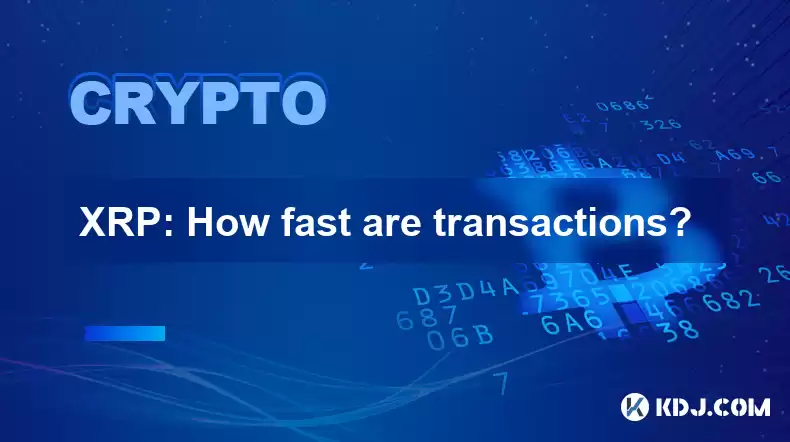-
 Bitcoin
Bitcoin $115000
0.12% -
 Ethereum
Ethereum $3701
4.50% -
 XRP
XRP $3.081
2.99% -
 Tether USDt
Tether USDt $0.0000
-0.01% -
 BNB
BNB $767.9
1.45% -
 Solana
Solana $169.5
3.13% -
 USDC
USDC $0.9999
0.01% -
 Dogecoin
Dogecoin $0.2106
4.30% -
 TRON
TRON $0.3334
1.62% -
 Cardano
Cardano $0.7564
2.54% -
 Stellar
Stellar $0.4165
0.76% -
 Hyperliquid
Hyperliquid $38.75
0.25% -
 Sui
Sui $3.593
3.00% -
 Chainlink
Chainlink $17.08
3.59% -
 Bitcoin Cash
Bitcoin Cash $573.6
4.35% -
 Hedera
Hedera $0.2508
-0.84% -
 Avalanche
Avalanche $23.07
6.46% -
 Ethena USDe
Ethena USDe $1.001
-0.02% -
 Litecoin
Litecoin $120.8
8.17% -
 UNUS SED LEO
UNUS SED LEO $8.943
-0.32% -
 Toncoin
Toncoin $3.400
-5.60% -
 Shiba Inu
Shiba Inu $0.00001255
1.54% -
 Uniswap
Uniswap $9.908
6.32% -
 Polkadot
Polkadot $3.718
2.10% -
 Monero
Monero $303.0
-0.74% -
 Dai
Dai $0.9999
-0.02% -
 Bitget Token
Bitget Token $4.392
0.91% -
 Cronos
Cronos $0.1403
6.31% -
 Pepe
Pepe $0.00001076
1.13% -
 Aave
Aave $267.2
1.80%
XRP: How fast are transactions?
Leveraging XRP's lightning-fast transactions below 4 seconds, high-frequency traders can execute a flurry of trades swiftly and minimize price slippage.
Feb 11, 2025 at 12:43 pm

Key Points:
- XRP transactions are processed in less than 4 seconds.
- The XRP Ledger (XRPL) can handle over 1,500 transactions per second (TPS).
- High-frequency trading is made possible by XRP's fast transaction times.
- Developers can create scalable and low-latency applications using the XRPL.
- Enterprises can leverage XRP's speed for real-time settlement and cross-border payments.
How Fast Are XRP Transactions?
XRP transactions are incredibly fast, taking less than 4 seconds to process. This is significantly faster than many other cryptocurrencies, such as Bitcoin, which can take hours or even days to complete a transaction.
The XRP Ledger (XRPL) is optimized for speed and efficiency. It uses a unique consensus mechanism called the XRP Ledger Consensus Protocol (XLCP), which allows for transactions to be processed quickly without compromising security. The XLCP protocol is based on a global network of validators who work together to validate transactions and maintain the integrity of the ledger.
TPS Capacity of the XRP Ledger
The XRPL is capable of handling over 1,500 transactions per second (TPS). This high TPS capacity makes the XRPL suitable for a wide range of applications, including:
- High-frequency trading: XRP's fast transaction times make it an ideal choice for high-frequency trading, where traders need to execute a large number of trades in a short period of time.
- Real-time applications: Developers can build real-time applications using the XRPL. These applications can be used to process data, trigger events, and execute transactions in real time.
- Cross-border payments: XRP can be used for cross-border payments, offering businesses and individuals a fast and cost-effective way to send money internationally.
Benefits of Fast Transactions
- High-frequency trading: Ripple's fast transaction times are a key factor, enabling high-frequency trading firms to execute orders quickly and efficiently, minimizing price slippage and increasing profitability.
- Scalability: The high TPS capacity enables Ripple to handle large volumes of transactions, meeting the demands of growing business and user networks without sacrificing performance.
- Low latency: Quick transaction times reduce network latency, ensuring near real-time settlement for a seamless user experience and optimal operational efficiency.
- Robust architecture: The underlying technology platform, the XRP Ledger (XRPL), is designed to process transactions swiftly and securely, ensuring reliability and stability.
Conclusion
XRP's fast transaction times are a key feature that distinguishes it from other cryptocurrencies. This speed makes it an ideal choice for high-frequency trading, real-time applications, and cross-border payments. As the world increasingly moves towards a digital economy, XRP's speed and efficiency will continue to be a valuable asset.
FAQs:
Q: What factors contribute to XRP's fast transaction times?
A: XRP's unique consensus mechanism, the XRPL Consensus Protocol, enables transactions to be processed quickly without compromising security. The protocol employs a global network of validators who work together to validate transactions and maintain the integrity of the ledger.
Q: How does XRP's speed compare to other cryptocurrencies?
A: XRP transactions are significantly faster than other popular cryptocurrencies. For example, Bitcoin transactions can take hours or even days to complete, while XRP transactions take less than 4 seconds.
Q: What are the benefits of fast transaction times for XRP?
A: Fast transaction times enable XRP to be used in a variety of applications, including high-frequency trading, real-time applications, and cross-border payments. By offering near real-time settlement and reducing latency, XRP enhances the efficiency and user experience for businesses and individuals alike.
Disclaimer:info@kdj.com
The information provided is not trading advice. kdj.com does not assume any responsibility for any investments made based on the information provided in this article. Cryptocurrencies are highly volatile and it is highly recommended that you invest with caution after thorough research!
If you believe that the content used on this website infringes your copyright, please contact us immediately (info@kdj.com) and we will delete it promptly.
- Velo Universe, DEX, and DeFi Security: Navigating the Future of Decentralized Trading
- 2025-08-05 09:25:13
- Bitget Wallet Revolutionizes Solana with Gas-Free Transactions: A New Era for DeFi
- 2025-08-05 09:25:13
- Ozak AI, Crypto Boom, and ROI Potential: Is This the Next Big Thing?
- 2025-08-05 09:25:24
- Solana's ETF Hopes & the All-Time High Chase: Is SOL Set to Soar?
- 2025-08-05 09:25:24
- Coinbase's Brian Armstrong and the Art of Focused Work: A Deep Dive
- 2025-08-05 09:25:30
- Uniswap Price Prediction: Bullish Reversal on the Horizon?
- 2025-08-05 09:25:30
Related knowledge

What is Ethereum’s Slashing mechanism and how to punish malicious behavior?
Feb 20,2025 at 03:08am
Key PointsOverview of slashingDifferent types of slashing in EthereumIncentives and consequences of slashingIdentifying and reporting slashed validato...

What is the verifier node of Ethereum and how to become a verifier?
Feb 19,2025 at 06:00pm
The Verifier Node of Ethereum: A Comprehensive GuideKey Points:What is a Verifier Node?How to Become a Verifier NodeResponsibilities and Rewards of a ...

What is Ethereum’s staking, and how to participate and earn money?
Feb 19,2025 at 04:37pm
Key Points:Understanding Ethereum's Staking MechanismSteps to Participate in StakingBenefits and Rewards of StakingSecurity and Risk ConsiderationsTec...

What is Ethereum’s DAO (Decentralized Autonomous Organization) and how does it work?
Feb 20,2025 at 03:12am
Key PointsDefinition and Structure of a DAOGovernance and Decision-Making in DAOsBenefits and Use Cases of DAOsChallenges and Limitations of DAOsWhat ...

What is Ethereum's multi-signature wallet and how to improve security?
Feb 20,2025 at 02:18pm
Key Points:Understanding the Concept of a Multi-Signature WalletBenefits and Drawbacks of Multisig WalletsRequirements for Setting Up a Multisig Walle...

What is Ethereum's oracle and how to provide data for smart contracts?
Feb 21,2025 at 01:30am
Key Points:Understanding the concept of oracles in EthereumExploring different types of oraclesDetailed guide on how to provide data for smart contrac...

What is Ethereum’s Slashing mechanism and how to punish malicious behavior?
Feb 20,2025 at 03:08am
Key PointsOverview of slashingDifferent types of slashing in EthereumIncentives and consequences of slashingIdentifying and reporting slashed validato...

What is the verifier node of Ethereum and how to become a verifier?
Feb 19,2025 at 06:00pm
The Verifier Node of Ethereum: A Comprehensive GuideKey Points:What is a Verifier Node?How to Become a Verifier NodeResponsibilities and Rewards of a ...

What is Ethereum’s staking, and how to participate and earn money?
Feb 19,2025 at 04:37pm
Key Points:Understanding Ethereum's Staking MechanismSteps to Participate in StakingBenefits and Rewards of StakingSecurity and Risk ConsiderationsTec...

What is Ethereum’s DAO (Decentralized Autonomous Organization) and how does it work?
Feb 20,2025 at 03:12am
Key PointsDefinition and Structure of a DAOGovernance and Decision-Making in DAOsBenefits and Use Cases of DAOsChallenges and Limitations of DAOsWhat ...

What is Ethereum's multi-signature wallet and how to improve security?
Feb 20,2025 at 02:18pm
Key Points:Understanding the Concept of a Multi-Signature WalletBenefits and Drawbacks of Multisig WalletsRequirements for Setting Up a Multisig Walle...

What is Ethereum's oracle and how to provide data for smart contracts?
Feb 21,2025 at 01:30am
Key Points:Understanding the concept of oracles in EthereumExploring different types of oraclesDetailed guide on how to provide data for smart contrac...
See all articles

























































































